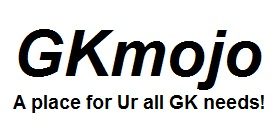SSC Combined Graduate Level (CGL) is undoubtedly the most prestigious among all recruitment exams that Staff Selection Commission conducts every year. It is highly competitive and Clearing this exam requires a proper planning.
Paper Pattern:
| Subject | Questions | Marks |
| General Intelligence & Reasoning | 25 | 50 |
| General Awareness | 25 | 50 |
| Quantitative Aptitude | 25 | 50 |
| English Language | 25 | 50 |
| Total | 100 | 200 |
In tier 1, There are 4 sections:
1) Quantitative Aptitude (Maths):
The Maths section consists of four major areas: Arithmetic, Algebra, Geometry and Trigonometry.
Within arithmetic: profit and loss, simple interest and compound interest, time and distance and time and work happen to be the key topics.
Geometry is the most important among all the areas.
Trigonometry must not be avoided at any cost. Focus on height and distance as well as trigonometric identities.
Data interpretation and analysis will become much easier if you have a good understanding of percentages and ratio and proportion.
Algebra, including simplification, is generally considered a tough nut to crack. It deserves more practice as compared to other areas.
Reasoning (general intelligence):
For almost all candidates, reasoning is the most scoring section of the exam.
Out here, you must focus on key areas such as: Analogy and classification, non-verbal reasoning, syllogisms, coding-decoding, blood relations, direction test and series.
Within non-verbal reasoning, the major types of questions asked in the exam are: (a) mirror image and water image (b) paper cutting, punching and folding (c) figural series completion (d) embedded figures. Make sure you cover all of them.
When it comes to series and finding the missing number questions, you can expect both number series and semantic series to be there in the exam.
Don’t neglect statement-conclusion & statement-assumption questions from inferential reasoning. Even with limited practice, you can score 2 to 3 marks as these questions are fairly simple.
English Language:
Preparation for this section would include focusing on the following topics: one-word substitution, idioms and phrases, synonyms and antonyms, fill in the blanks (sentence completion), sentence errors, reading comprehension, sentence rearrangement and jumbled-up sentences.
Narration and active voice / passive voice may or may not be there in tier-I exam. You may overlook them if there is a scarcity of time. However, make sure you cover them for the tier-II exam.
Quite often vocabulary-based questions (one-word substitution, synonyms and antonyms) as well as idioms and phrases from past SSC papers get repeated. So, it makes a lot of sense to go through previous year exam papers and focus specifically on these questions.
The difficulty level of reading comprehension passages is not high. However, some practice is needed to locate the answers to comprehension questions asked from these passages.
For cracking sentence error spotting questions, knowledge of grammatical rules is essential. If you find yourself lacking in grammar, you should focus on practicing English usage questions such as fill in the blanks, sentence rearrangement and jumbled-up sentences.
General Knowledge (GK):
Among all sections, GK has the most comprehensive syllabus and requires a lot of time for preparation. So, it is a must to understand the pattern of questions. It is the most scoring section too.
While going through past year SSC questions papers, we find there were lots of questions on politics, history and geography, economy. It is quite common for these questions to get repeated in the exam.
Current affairs should be read of last 8-10 months .
There were questions on the firsts in India, common chemical compounds, folk dances of India & traditional festivals, Indian constitution, socio-religious movements of pre-independent India, national income & market structure , important scientific phenomena and medieval & modern Indian history.
So for SSC CGL , You can join Our SSC CGL GK Course for Tier 1: Check here
